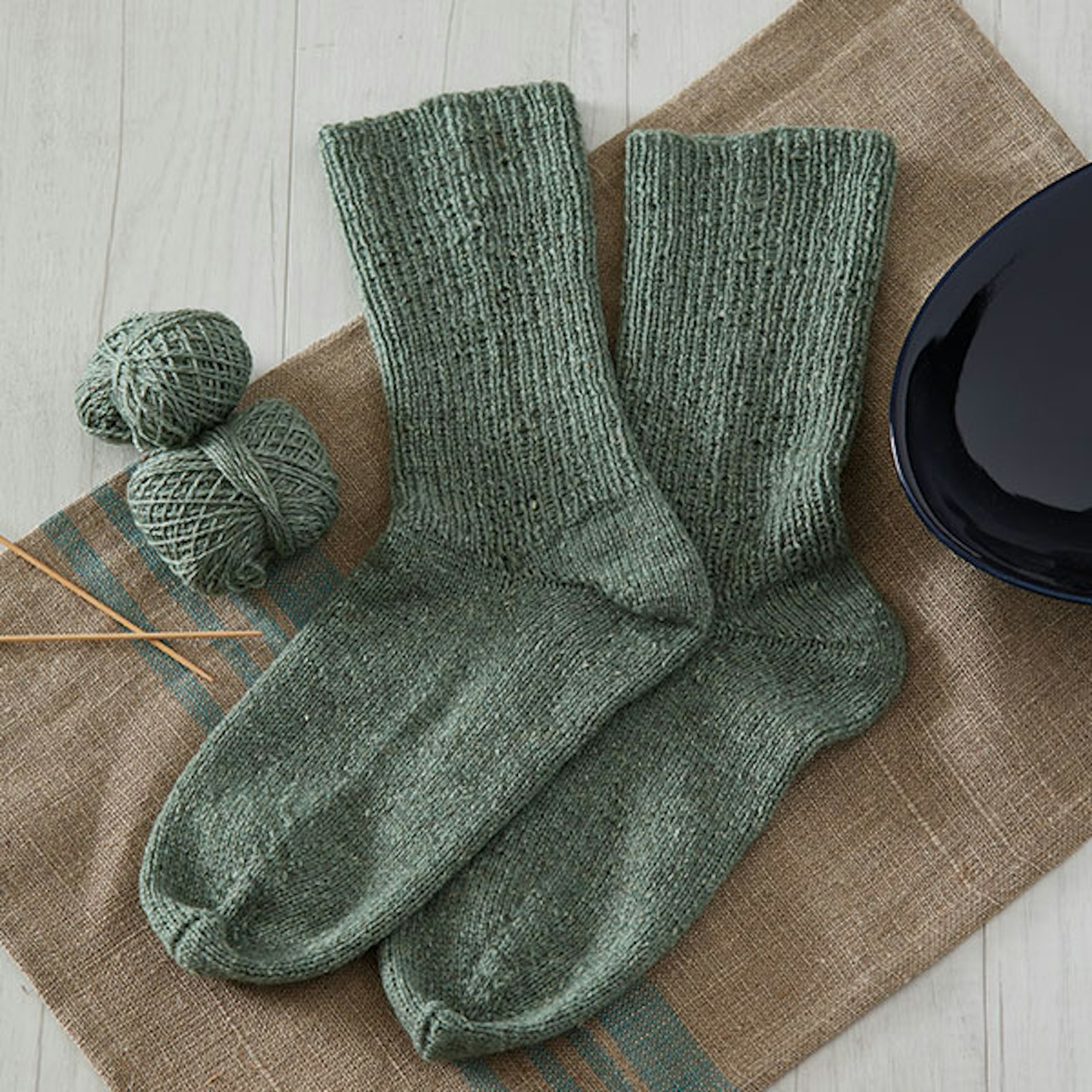During the winter months, indulge and wear knitted socks around the house. Nothing feels cozier! In the January/February 2018 issue of PieceWork, our twelfth annual Historical Knitting issue, contributor Carol Huebscher Rhoades tell us a bit about the Swedish tradition of wearing raggsocks indoors and shares her pattern in “Swedish-Influenced Raggsocks: Everyday Luxury.” Here’s Carol:
In Scandinavia, heavy and durable everyday socks are called raggsockor. The Bonniers Swedish Dictionary defines a raggsocka as a sports stocking of heavy yarn, and it defines ragg as long, coarse and tangled, usually of goat hair (my translation). Typically, raggsocks (as they are called in English) are knitted with worsted to Aran-weight wool yarn at a gauge of 16 to 20 stitches per 4 inches (10.2 cm). Raggsocks are primarily for winter wear and sometimes worn over thinner socks. The Danish term ragsok translates as “ski sock.” Children wore these socks without shoes in their school classrooms; both children and adults wore these socks at home. (Scandinavians still usually remove their shoes in the entryway.)
Raggsock construction is simple: the leg is worked in knit one, purl one or knit two, purl two ribbing, followed by a Dutch, hourglass, or afterthought heel, then a stockinette foot. Although many raggsocks were and are knitted in single-color ribbing, striped versions are not uncommon. Each member of a family might have an individual striping pattern on the socks to identify correct ownership.
Traditionally, sheep’s wool and natural colors were used, often in a marled blend (such as the Norwegian 3-ply raggsock yarns with two light strands and one dark). Today, the yarn is either 100 percent wool or 80 percent wool/20 percent nylon, and it comes in many solid, marled, and variegated colors. Raggsock yarn is not only sturdy but is said to resist odors and moisture—very practical!
Little distinguishes raggsock styles from different Scandinavian countries. All of my Swedish sock books and booklets feature at least one raggsock pattern. The socks are uniformly sturdy, practical, and quick to knit even when working at a firm gauge. However, one can still find variations. A winner in one Swedish sock design contest made her raggsocks for skiing with two layers of ribbing for the leg: a longer inner layer and somewhat shorter outer layer that is folded down for three layers of warmth around the ankle and to keep out snow.
My version of Swedish raggsocks relies on a special yarn for combining luxury with practicality. I think of the yarn as Scandinavia meets the Silk Road. Blacker Yarns’ Samite contains Shetland and Gotland wools plus silk to provide strength and semilustrous Bluefaced Leicester wool to add softness and a subtle sheen. The Shetland also adds bounce and cushioning.
Ribbing is not my favorite technique, but the Samite yarn makes the work a pleasure. To finesse the project, I cast on with the one/one ribbing method. Because I recently learned how to work German short-row turns, I decided it was finally time to try an hourglass heel with German short-rows.
You can wear these socks as practical yet luxurious- feeling footwear for lounging around the house or après ski at the resort, or, if firmly knitted, alone or with heavier socks for outdoor winter activities. These raggsockor offer such an easy way to feel cozy and pampered.
CAROL HUEBSCHER RHOADES lives in Madison, Wisconsin. She spends much of her time translating Scandinavian textile and cookbooks into English while also continuing her research into traditional knitted garments from northern Europe, where she always finds wonderful surprises and new avenues to explore.
Find the pattern for Carol’s Swedish-inspired raggsocks, plus five more patterns for knitted socks, in the January/February 2018 issue of PieceWork.
Published February 26, 2018; updated April 1, 2021.

